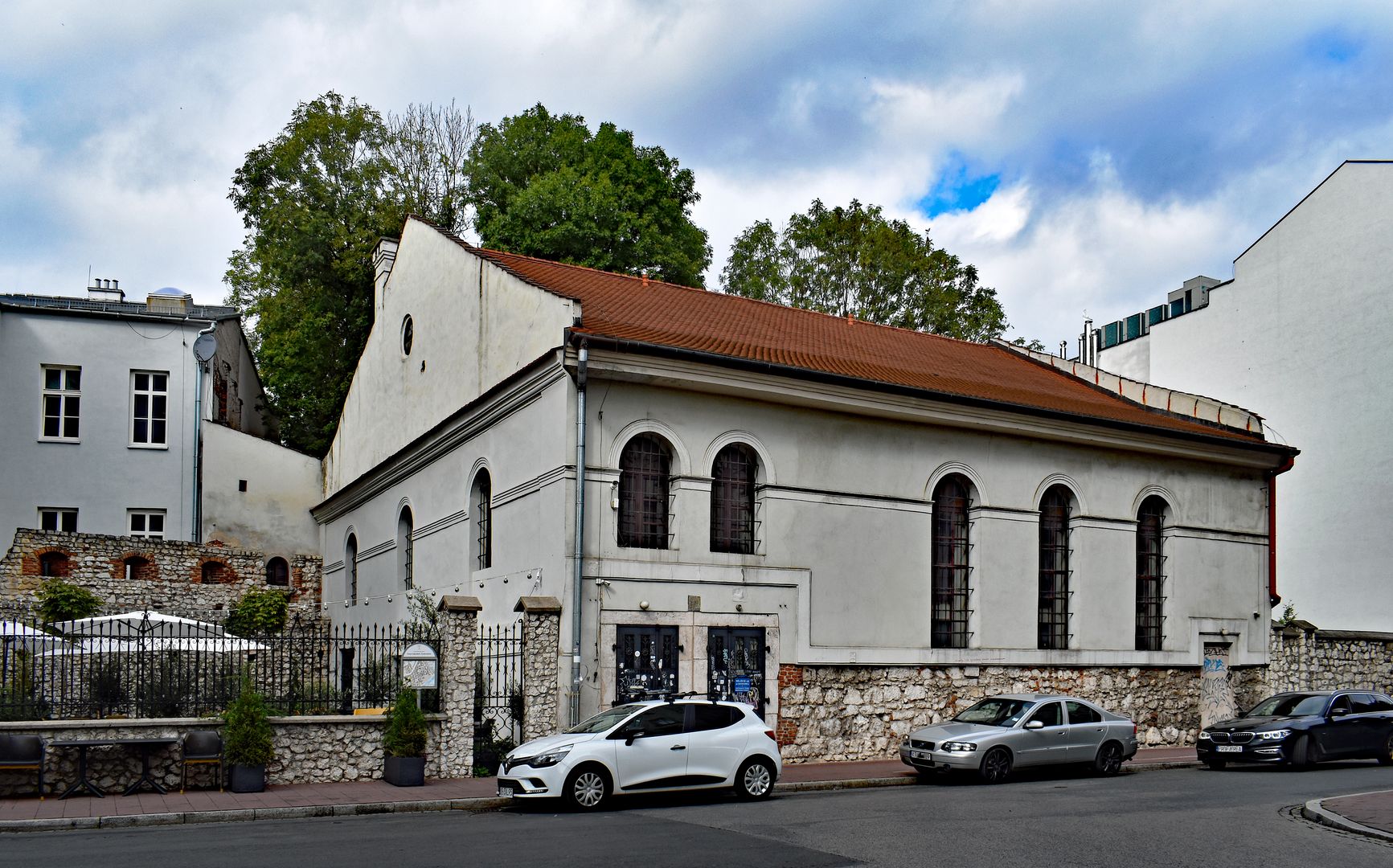Kupa Synagogue in Krakow
6.33

Overview
The Kupa Synagogue, located in Krakow's Kazimierz district at 27 Miodowa Street, is the last synagogue built during the existence of the Jewish town. It was established in the 17th century, around 1635, with funds provided by craftsmen and small merchants. It is also known as the Hospital and Poor Synagogue, reflecting its social character. Architecturally, it features a Baroque style with a rectangular layout, tall semicircular windows, and a gabled roof. The interior houses a square prayer hall, adorned with paintings from 1925 depicting panoramas of Jerusalem, Tiberias, and the Western Wall. The original polychromes date back to the 17th century, with a particularly notable series of zodiac signs in the western part of the women's gallery, making the synagogue one of the few in Poland with such a motif. At the center of the hall stands the Aron ha-kodesh, decorated with Baroque details and inscriptions. The history of the synagogue is rich; it underwent numerous renovations, especially in the 18th century when new windows were opened and wooden vaults were introduced. Unfortunately, during World War II, the building was devastated. After the war, it served various purposes, including as a warehouse, and in later years, efforts were made to restore it. Between 2000 and 2002, a comprehensive renovation was carried out, restoring the synagogue to its former glory thanks to funding from various sources. Today, it is an important cultural center, hosting the Jewish Culture Festival and various events, bridging the past with the present. The Kupa Synagogue is a testament to the rich history of Krakow's Jewish community and its traditions, as well as evidence of its revival in today's cultural context.
Location
Tickets
Powered by GetYourGuide
2025 Wizytor | All Rights Reserved